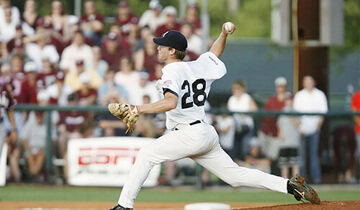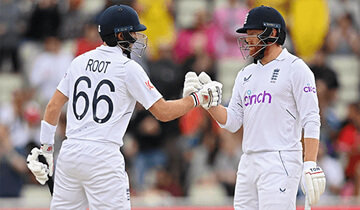Baseball teams are always looking for ways to evaluate players and improve their rosters. One helpful statistic is Wins Above Replacement, commonly known as WAR. This metric aims to quantify a player’s total contribution to their team compared to a theoretical “replacement level” player. While WAR has its limitations, it can be a useful tool for identifying strengths, weaknesses, and potential areas for improvement.
What is WAR?
Defining the WAR statistic
WAR stands for Wins Above Replacement. In simple terms, it measures how many more wins a player contributes to their team versus a baseline replacement-level player at their same position. Replacement level represents the production a team could easily acquire at minimal cost, such as a minor league call-up or veteran free agent. A higher positive WAR means a player is more valuable.
Different versions of WAR
There are a few versions of WAR calculated by various baseball sites, most notably Baseball-Reference’s bWAR and Fangraphs’ fWAR. They differ in their underlying formulas but aim to quantify total contribution from batting, baserunning, fielding and pitching. WAR sums up all these aspects rather than evaluating players on any one statistic.
Using WAR to Evaluate the Team
Identifying strengths and weaknesses
The WAR statistic can highlight strengths, weaknesses and areas for improvement across a roster.
Offensively, the team should focus on players with high WAR contributions from quality hitting. Areas to target may include improving plate discipline to draw more walks or adopting a more aggressive baserunning approach to take extra bases. Defensively, the team can seek upgrades at positions where fielding WAR lags behind others. The front office can also assess the rotation and bullpen by identifying pitchers with low WAR compared to others around the league.
Combining with other metrics
While WAR alone shouldn’t dictate decisions, it provides an additional data point to evaluate players. Teams combine WAR with scouting observations, character assessments and other metrics as they strive to assemble the most competitive roster possible.
In closing, Wins Above Replacement gives teams a standardized way to measure total player contribution compared to an average replacement. By analyzing WAR across the roster, teams can make informed personnel decisions as they continually look to improve. While just one metric among many, WAR can play an important role in constructing a championship-caliber baseball team.
Demystifying the WAR Statistic for Position Players
Baseball’s advanced analytics era has produced many new statistics aimed at precisely evaluating player performance. One of the most widely used is Wins Above Replacement, or WAR. This popular all-in-one metric sums up a player’s total contributions, but how exactly is it determined? Let’s break down the WAR calculation for position players.
The Basic WAR Formula
The main components
In simple mathematical terms, the WAR calculation for position players looks like this:
WAR = (Batting Runs + Base Running Runs + Fielding Runs + Positional Adjustment + League Adjustment + Replacement Runs) / Runs Per Win
The main components of the formula are batting, baserunning, and fielding. Additional adjustments help account for the player’s position, their league, and replacement level. When divided by estimated runs per win, the result is a WAR value representing how many extra wins the player provides over a replacement.
Evaluating Batting Value
Using wRAA
The batting runs portion relies on a statistic called Weighted Runs Above Average (wRAA). This uses the player’s offensive outputs like hits, walks, and extra-base hits and compares them against the league average production at that position. The formulas behind wRAA are complicated, but essentially it aims to estimate the number of batting runs above what an average hitter would produce.
Quantifying Baserunning
Stats like UBR and wSB
Base running value includes stats like Ultimate Base Running (UBR) and Weighted Stolen Base Runs (wSB) to evaluate how a player contributes on the basepaths beyond strictly stolen bases. For example, advancing from first to third on a single or scoring from second on a sac fly would add positive value. Poor baserunning decisions would subtract from this total.
Measuring Fielding Contribution
Using UZR
Fielding runs uses metrics like Ultimate Zone Rating (UZR) to estimate how many runs a player saved or allowed on defense. UZR divides the field into zones and uses video review and probability to assign credit or blame on balls hit into those zones. Good fielders will have high UZR and positive fielding runs.
Putting It All Together
Those three main components account for the bulk of a position player’s WAR value. The additional adjustments help control for factors like ballpark effects, era played, and differences in defensive demand by position. Once everything is added up and divided by runs per win, we’re left with the WAR statistic as a useful all-in-one assessment of a player’s total contributions in all facets of the game.
So while WAR boils down performance into one number, the calculation itself is quite detailed. Understanding what goes into WAR can help appreciate both the statistic’s usefulness and its limitations. With careful interpretation, WAR provides valuable information to evaluate position players.
Demystifying the WAR Statistic for Pitchers
The Wins Above Replacement (WAR) metric has become a popular way to evaluate players in baseball. But while the general concept of WAR is simple - measuring a player’s total value versus a replacement - the calculation itself can be complex. This is especially true for pitchers, who use a different formula than position players. Let’s break down how WAR is determined on the mound.
Pitcher WAR Formula
Focused on FIP or runs allowed
The WAR formula for pitchers focuses on either Fielding Independent Pitching (FIP) or runs allowed as the starting point. It is then adjusted for factors like ballpark, team defense, role, and replacement level before being divided by runs per win to calculate WAR.
Using Fielding Independent Pitching (FIP)
Isolating pitcher performance
FIP aims to isolate a pitcher’s performance from teammate defense and ballpark factors. It focuses only on outcomes like strikeouts, walks, hit batters and home runs that do not involve fielders. The formula weights each event and scales it to estimate runs allowed per 9 innings. Since FIP ignores fielding, it represents a pitcher’s raw skill.
Comparing to Runs Allowed
Accounting for context
Some versions of WAR use actual runs allowed rather than FIP. This accounts for how the pitcher performed but is colored by defense and ballpark effects. Teams with poor defense will allow more runs, hurting a pitcher’s WAR whether it was the fielders’ fault or not.
Additional Adjustments
Controlling for factors
From the initial FIP or runs allowed baseline, further adjustments are made based on ballpark, role (starter vs reliever), team defense, and more. Replacement level also gets factored in to final WAR value. This controls for era, park factors, and quality of opposition.
Putting It Together
While the details get complicated, pitcher WAR simplifies overall performance into a runs above replacement format. Using FIP or runs allowed as a baseline, WAR adjusts for context before relating it to replacement level for an all-in-one value metric. Understanding the nuances can help properly interpret WAR for what it aims to measure. For all its intricacies, WAR gives pitchers a standardized statistic to assess total contributions.
So while the backend math can seem complex, pitcher WAR encapsulates performance into a single number for easy comparison. Appreciating how it’s calculated helps gain full value from this advanced metric.
Putting WAR in Context: Translating Values into Player Skills
Wins Above Replacement (WAR) has become a standard tool for measuring a baseball player’s overall value. But how should we interpret the WAR metric to get a sense of true player ability? Here is a guide to translating WAR values into understandable skill levels.
The WAR Scale
General guidelines
While WAR totals will vary by source, here is a general framework for classifying players:
- 0-2 WAR - Bench player/role player range
- 2-3 WAR - Average starter territory
- 3-4 WAR - Good regular player
- 4-5 WAR - All-Star caliber
- 5-6 WAR - Superstar/MVP candidate
- 6+ WAR - Historical great seasons
Average vs everyday players
Knowing this scale helps contextualize any single WAR value. For reference, a starting position player in MLB averages around 2 WAR over a full season.
Looking at the Best Seasons
All-time peaks
The highest single season WAR totals in MLB history help illustrate elite values. Babe Ruth’s 1923 season of 15.0 WAR and Walter Johnson’s 14.6 WAR in 1913 set marks unlikely to be broken. More recently, peaks include Barry Bonds (12.5 WAR), Cal Ripken Jr. (11.5 WAR), and Mike Trout (10.5 WAR). Any season above 8 WAR is an absurdly good year.
Best pitcher seasons
For pitchers, Pedro Martinez leads with 11.7 WAR in 2000, followed by Steve Carlton (11.1 WAR in 1972) and Dwight Gooden (11.0 WAR in 1985). A season above 7 WAR for a pitcher is Cy Young-caliber domination.
Judging Career Totals
Over a full career, anything above 60-70 WAR marks a clear path to Cooperstown. The all-time leaders include Babe Ruth (163 WAR), Cy Young (168 WAR), and Willie Mays (149 WAR). Recent players eclipsing 100 WAR for their careers include Alex Rodriguez, Albert Pujols, and Barry Bonds.
While these landmarks help, WAR is best used comparatively to judge a player against their contemporaries rather than by any fixed standard. Keeping WAR values in context lets us properly translate performance into understandable skill levels. With a feel for the relative scale, WAR becomes even more useful for evaluating players across MLB history.
The Value and Limits of WAR as a Baseball Metric
Wins Above Replacement (WAR) has become a go-to statistic for summarizing a baseball player’s total value. However, like all metrics, WAR has both advantages and drawbacks. Here is a look at the pros and cons of using WAR to evaluate players.
Pros of Using WAR
Consolidates Overall Value
The main appeal of WAR is that it encapsulates a player’s contributions in all facets of the game into one number. Instead of citing dozens of different stats, WAR provides an all-in-one metric. It includes both offensive and defensive value to offer a more complete picture.
Accounts for Replaceability
By comparing players against a theoretical replacement level baseline, WAR helps quantify the scarcity of their production. Stars who post stats well above average are rewarded in proportion to more marginal players.
Adjusts for Context
WAR controls for factors like ballparks, era, and quality of competition. This allows for cross-era comparisons on a level playing field. WAR aims to isolate player value from team influences.
Cons of Using WAR
Not a Perfect Calculation
While the concept is great, the WAR statistic itself relies on estimations from available data. The computations involve assumptions and models that attempt to quantify context and value.
Ignores Some Aspects
Certain elements like leadership, clutch performance, or ability to stay healthy are not factored into WAR. The metric focuses solely on tangible on-field contributions that can be measured statistically.
All Runs Valued Equally
WAR weighs all runs above replacement evenly. In reality, certain game situations and higher-leverage production provide added value not captured by WAR’s linear run equivalency.
In the end, WAR can be a useful shorthand for player value but has flaws like any other metric. It should supplement rather than replace individual offensive, defensive, and pitching stats in analysis. WAR’s all-in-one design makes it valuable, but context is still required for well-rounded evaluation.
Conclusion
In Summary: The Value of WAR with Proper Context
Wins Above Replacement (WAR) has emerged as one of the most popular statistics in baseball for quantifying a player’s overall contributions. By estimating runs above a hypothetical replacement-level player, WAR aims to provide an all-in-one number to summarize total value.
While helpful, WAR should not be viewed as infallible. The calculations rely on models and assumptions that provide estimates rather than absolutes. WAR also omits certain elements of value not easily captured by statistics. As with any metric, proper context and interpretation are required.
When used carefully in combination with other stats, WAR can offer additional insight into player performance. It provides a useful framework for thinking about value relative to replacement level in wins. But WAR alone should not dictate evaluations or decisions.
Overall, WAR has advantages as an accessible shorthand for player contribution. But baseball analysis works best when WAR supplements rather than replaces individual offensive, defensive and pitching metrics. WAR’s value comes from quantifying what the numbers alone may miss - consolidating total player value above an average replacement. With appropriate context, WAR emerges as a valuable tool rather than a definitive answer in evaluating players.







































